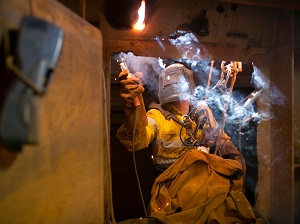Confined spaces may appear to be safe but can contain invisible hazards such as dangerous fumes, vapors, or insufficient oxygen. OSHA requires confined spaces to be evaluated for hazards present, and if there are hazards, then the area must be classified as a permit-required confined space.
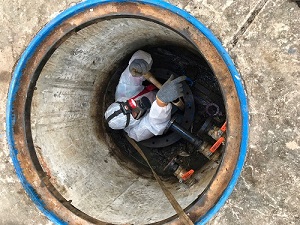
What is a Confined Space?
It is common to find areas that are considered “confined spaces” in a variety of industries. The term confined space means any space that is large enough for a worker to enter and perform tasks but isn’t designed for workers to be inside continuously and has limited or very restricted means for entry or exit.
Confined spaces may not seem like a concern if no one ever has to enter them but they can’t be ignored. Sometimes there is a maintenance activity, repair, or new process that requires someone to enter a confined space.
Permit-Required Confined Spaces
OSHA requires confined spaces to be evaluated to find out if there are any hazards present, and if there are hazards,then the area must be classified as a permit-required confined space.
OSHA Construction Standard 1926.1202 and General Industry Standard 1910.146(b) "Confined space"means a space that: (1) Is large enough and so configured that an employee can bodily enter it; and (2) Has limited or restricted means for entry or exit; and (3) Is not designed for continuous employee occupancy.
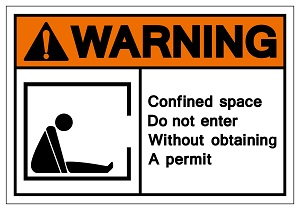
There are four categories of hazards that will make any confined space a permit-required confined space:
- hazardous atmosphere – such as low oxygen or a toxic gas
- potential for engulfment or suffocation – a risk of drowning or being buried
- a layout that might trap a worker through converging walls or a sloped floor
- or any other serious safety or health hazard
Only trained and authorized persons can work in confined spaces. It is important to recognize the hazards of confined spaces and take the proper steps to protect each worker during confined space entry work.
OSHA Construction Standard 1926.1207(a) The employer must provide training to each employee whose work is regulated by this standard…and ensure that the employee possesses the understanding, knowledge, and skills necessary for the safe performance of the duties assigned under this standard.
OSHA General Industry Standard 1910.146(g)(1) The employer shall provide training so that all employees whose work is regulated by this section acquire the understanding, knowledge, and skills necessary for the safe performance of the duties assigned under this section.
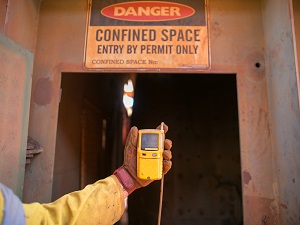
Hazardous Atmospheres in Confined Spaces
Confined spaces can be deadly because although they may appear to be safe, they could contain invisible hazards such as dangerous fumes, vapors, or insufficient oxygen. The only way to know if a confined space has a hazardous atmosphere is to test it using a device designed solely for that purpose.
A hazardous atmosphere inside a confined space may contain any of the following:
- flammable gas, vapor, or mist
- airborne combustible dust
- oxygen concentration below 19.5% or above 23.5%
- any airborne substance above dangerous levels according to OSHA regulations
- any other atmospheric condition that is immediately dangerous to life or health

Confined Space Engulfment Hazards
Some confined spaces may appear to be safe because they contain a material that seems harmless, but certain particulate materials like soil, gravel, sand, flour, or grain may temporarily support your weight but can act like quicksand when a person steps onto them. Also, there are an unknown number of potential liquids that pose a danger of drowning to a worker. A few examples include wastewater, process chemicals, chill water, consumer or food products such as milk, by-products, runoff, sewage, or condensation. Liquids and loose materials pose an “engulfment hazard” which means workers could sink, be captured, and become buried by the material.
OSHA Construction Standard 1926.1202 and General Industry Standard 1910.146(b) "Engulfment" means the surrounding and effective capture of a person by a liquid or finely divided (flowable) solid substance that can be aspirated to cause death by filling or plugging the respiratory system or that can exert enough force on the body to cause death by strangulation, constriction, crushing or suffocation.
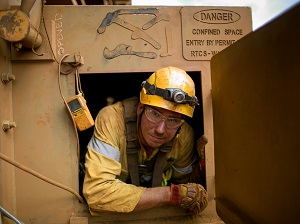
Other Hazards of Confined Spaces
Certain work areas that are confined spaces must be classified as permit-required simply because their design and configuration could easily cause workers to be stuck, get caught, and be trapped.
In addition, even if a confined space has been tested and cleared for atmospheric hazards, does not contain engulfment dangers, and it is easy to get inside of, it may still need to be classified as a permit-required confined space because of the danger of the work that will be performed.
Workers entering the space may bring with them hazards due to their tasks such as welding, painting, or fall dangers which would make it extremely dangerous to complete the work.
